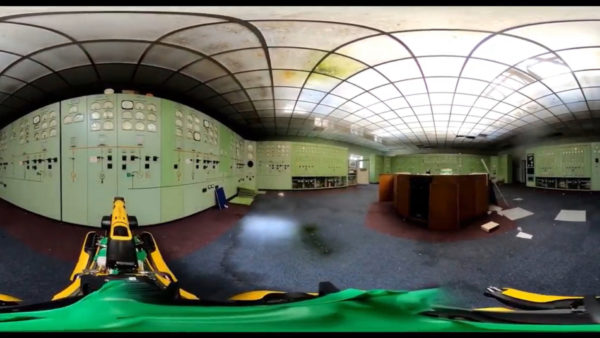
The BIM process has raised the profile of M&E with the rest of the project team. Lots of aspects, such as spatial fit and asset data, are being raised earlier in projects, much of which is centred around the delivery of M&E services.– Martin Howe, SES
Martin Howe, national BIM manager and Paul Newby, executive engineering services director at SES Engineering Services on why less than one in six building services contractors are “BIM ready”, justifying the high upfront costs of BIM, and challenges of switching over to Revit.
Will the industry be able to meet the Level 2 deadline in April?
Martin Howe: A large percentage of the industry won’t, realistically you have to look at the date as a starting point, it might be another five years before we see large-scale adoption. Some major contractors are now achieving BIM accreditation, but for everything to become joined up Tier 2 and Tier 3 supply chain partners must have similar levels of expertise and there is still a lot to do there.
Nevertheless, the deadline is significant because it indicates a commitment from the government that all departments will produce Employer’s Information Requirements and all the required documentation and guidance will be in place.
What are the biggest challenges for industry?
Paul Newby: Changing the working culture so that people understand and adopt BIM because they realise the tangible benefits it can bring. The way that M&E contractors are procured needs to change, the traditional approach is to get them involved late in the process which removes a lot of the value that can be achieved through earlier supply chain engagement.
Will public clients be able to deliver effective Employer’s Information Requirements?
PN: It will come down to them getting good advice and setting out their own terms of reference for what they want to achieve by following the BIM route. The best clients are those that clearly understand what they are trying to achieve and how to get there.
Those that have not yet been on a BIM journey will struggle with the cost all this requires to implement. In our experience, some EIRs are fantastic and extremely focused on the end users’ requirements, others you might refer to as “everything but the kitchen sink”.
How far along the Level 2 learning curve is SES?
PN: We have been going through the Level 2 accreditation process for several months and a final approval is expected in the New Year. We are doing much more than simply coordinating in 3D, BIM is linked into our business process systems, enterprise resource planning systems and databases and we have changed our business processes so that digital engineering and pre-construction thinking is embedded into the heart of project delivery.
Is BIM in the M&E sector as advanced as the rest of the industry?
MH: A recent survey by the Electrical Contractors’ Association (ECA) found that less than one in six building services firms are “BIM ready”, which in my view is realistic. SES is fortunate to have been ahead of the curve, we saw the potential benefits a number of years ago and since then have been investing heavily to make it happen.
PN: The key for our sector is to change the culture so people believe this is the right thing to do, see demonstrable benefits for their bottom line and start to talk the BIM language. In the M&E world you have to be able to take it onto the site and combine it with lean engineering and offsite manufacture, which really takes time and expertise.
Are the upfront costs of BIM being offset by reduced outturn costs?
PN: In general, BIM-related fees are going up, BIM resources are at a premium and as more information gets added into EIRs and BIM Execution Plans it will put an even greater strain on resources. Costs are so high that now we, as an industry, need to see more results coming out the back end of projects to justify the investment being put in at the front end.
MH: This is an industry-wide issue, it remains to be seen how we can hit the government’s cost-saving targets because at the moment there are very few examples in the industry of projects delivering reduced outturn costs.
Are lead contractors recognising the growing role of M&E partners and trying to work with them more collaboratively?
MH: The BIM process has raised the profile of M&E with the rest of the project team. Lots of aspects, such as spatial fit and asset data, are being raised earlier in projects, much of which is centred around the delivery of M&E services.
PN: We have noticed an increase in two-stage tendering and pre-construction services agreements put in place as we continue to emerge from the recession, but I am not convinced that is born out of BIM aspirations.
However, the fact that more Tier 1 contractors are becoming BIM accredited should encourage them to work even more collaboratively with supply chain members and make early supply chain involvement the norm. This can only accelerate BIM maturity, effectiveness and value for everyone.
Has the switch to BIM software, from M&E alternatives, caused any issues?
PN: Revit is becoming ubiquitous now, whereas previously we worked in Autodesk Fabrication software and as a result investment in related software and training has been expensive. Revit has a number of advantages and over time it will create efficiencies.
Our BIM journey started as a means to an end, with Autodesk Fabrication helping us produce off-site manufactured solutions straight from BIM. Since then Revit has become the platform of choice with many of our clients
MN: Long term, Revit will become the common platform for MEP modelling and IFCs will improve over time as the common format for seamless information exchange and collaboration.
Are there enough BIM technical staff available in the marketplace?
PN: Although there are a lot of people in the industry we can retrain in BIM software, the real value lies elsewhere. Being able to operate Autodesk Revit software doesn’t make you a BIM coordinator, or a better collaborator or designer. The real value of BIM comes from linking together process, technology and people towards a common goal.
There is a perception that M&E is becoming ever more critical and taking up a larger chunk of budgets on new build projects. Is that the case?
PN: Not really, M&E companies are having to work much harder to win projects and deliver sustainable margins. However, the sector is becoming more valuable in terms of customer satisfaction and customer experience, either as a result of the building environments we create or the carbon savings we can deliver.
Comprehensive Asset Information Models are the holy grail of BIM – is this a big focus for SES right now?
PN: In part… there are a small cadre of customers asking for this information, some of whom have seen it through, while others baulked when they realised the cost of delivering it. Clients are certainly seeking a lot more information in EIRs, which is translated through into BIM Execution Plans, so it is definitely an emerging requirement.













